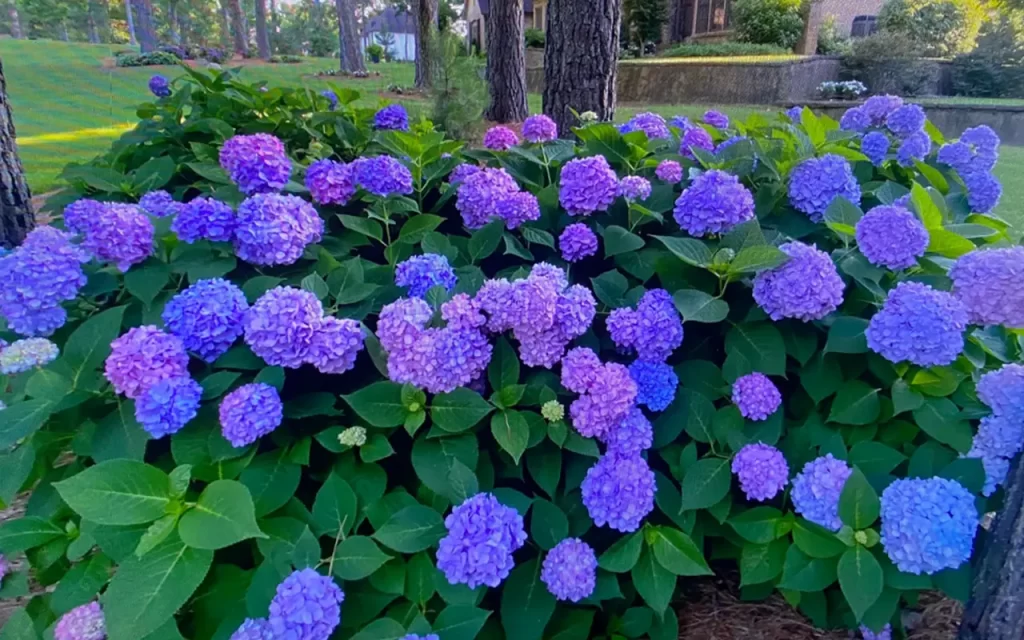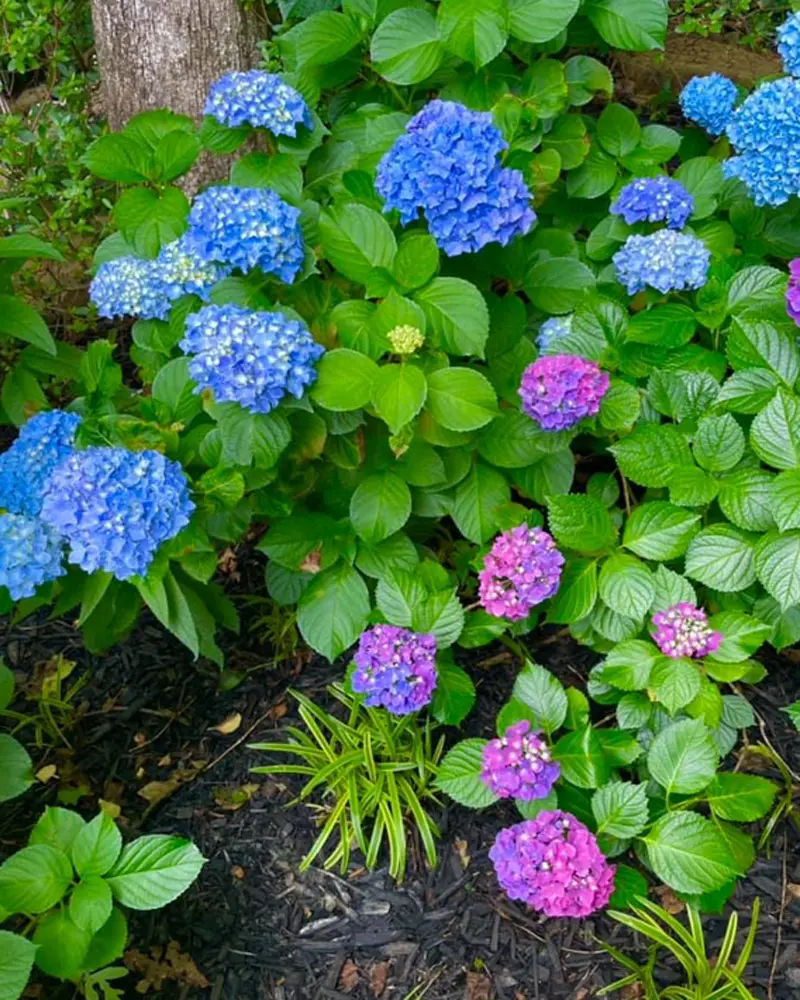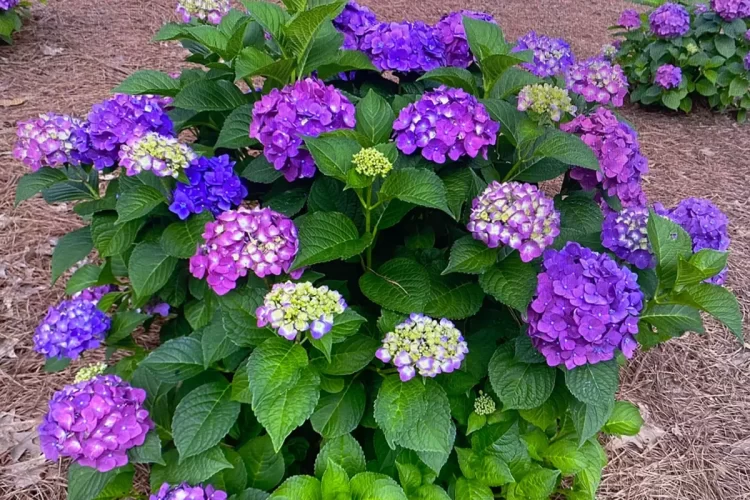Hydrangeas are beloved for their enchanting blooms, which can range from pastel pink to vibrant blue. While some hydrangea varieties naturally bloom in pink, you can influence the color of certain types, like bigleaf hydrangeas, by adjusting soil pH and nutrient content. This guide covers everything you need to know about making your hydrangeas pink, from understanding soil chemistry to implementing effective gardening techniques.
Understanding Hydrangea Color and Soil pH
Hydrangea color is primarily determined by the availability of aluminum ions in the soil, which is influenced by pH levels. Soil pH is a measure of acidity or alkalinity, and it ranges from 0 to 14. Acidic soil (pH below 7) enables hydrangeas to absorb aluminum, leading to blue blooms. Conversely, in alkaline soil (pH above 7), aluminum is less available, resulting in pink flowers.
Which Hydrangeas Can Change Color?
Not all hydrangeas are affected by soil pH. Here are the primary types:
- Bigleaf Hydrangea (Hydrangea macrophylla): These are the most responsive to pH changes, including mophead and lacecap varieties. This type is ideal for experimenting with color changes.
- Hydrangea serrata: Similar to bigleaf hydrangeas, this type can also shift colors based on soil conditions.
- Other Types: Panicle and smooth hydrangeas are not influenced by soil pH and will not change color. If you want pink flowers on these varieties, it’s best to choose cultivars that bloom in pink naturally.
Step 1: Test Your Soil pH
Before making adjustments, determine the current pH level of your soil. This will help you understand how much adjustment is necessary to achieve pink blooms.
- Purchase a Soil pH Test Kit: Available at garden centers, these kits provide accurate readings of your soil’s acidity or alkalinity.
- Collect a Soil Sample: Take a sample from the area where your hydrangea is planted, following the instructions provided with your test kit.
- Analyze the Results: For pink blooms, aim for a pH between 6.0 and 6.5. If the soil is more acidic, you’ll need to raise the pH to create a more alkaline environment.
Step 2: Raise Soil pH to Encourage Pink Blooms

If your soil is too acidic, there are several effective ways to raise the pH and reduce the availability of aluminum ions.
Adding Lime to the Soil
Lime is one of the most popular and effective amendments for raising soil pH. Garden lime is rich in calcium carbonate, which neutralizes acidic soil and gradually increases pH levels.
- Choose the Right Lime Product: Use garden or dolomitic lime, which is readily available at garden centers.
- Apply Lime Around the Plant: Sprinkle the lime around the base of the hydrangea, being careful not to damage the roots.
- Work Lime into the Soil: Use a rake to gently mix the lime into the top few inches of soil.
- Water Thoroughly: Water the area well to help the lime start working into the soil.
Note: Lime can take several months to fully alter the soil pH, so it’s best to apply it well before the blooming season for visible results.
Using Wood Ash as an Alternative
Wood ash, a natural byproduct of burning wood, also raises soil pH. It contains potassium and other beneficial nutrients for plants.
- Collect Ash from a Wood-Burning Fireplace or Stove: Ensure the ash is free from contaminants and chemicals.
- Apply Sparingly: Sprinkle a thin layer of ash around the hydrangea base. Too much can alter the pH excessively, so apply cautiously.
- Rake Lightly: Gently incorporate the ash into the soil and water the area.
Other Amendments to Increase Soil pH
Besides lime and wood ash, you can also use products like eggshells or baking soda to increase alkalinity slightly. However, these are slower and less potent, so they may take longer to impact pH levels.
Step 3: Limit Aluminum Absorption
Since aluminum ions contribute to blue hues in hydrangeas, restricting aluminum access is essential for pink blooms. Here’s how to prevent aluminum absorption effectively:
- Use Phosphorus-Rich Fertilizer: High-phosphorus fertilizers inhibit aluminum uptake, promoting pinker blooms. Choose fertilizers with a high middle number, like 10-20-10.
- Avoid Aluminum Sulfate: This commonly used amendment lowers pH and should be avoided when trying to achieve pink flowers.
- Water Carefully: Use rainwater or filtered water if possible. Tap water can be alkaline in some areas, helping to raise pH, but it may contain aluminum in others, so check with your water provider if unsure.
Step 4: Maintain Optimal Hydrangea Care for Healthy Blooms

While altering pH is essential, proper care also plays a vital role in vibrant, long-lasting blooms.
Watering Needs
Hydrangeas prefer consistently moist soil but do not tolerate waterlogging. Ensure proper drainage and water deeply, especially during dry spells.
- Frequency: Water 1-2 times per week, more during hot weather.
- Timing: Water in the morning to allow foliage to dry, reducing the risk of fungal issues.
Sunlight Requirements
Bigleaf hydrangeas prefer morning sun and afternoon shade. Excessive sunlight can scorch leaves, while too little light may inhibit blooming. Find a balanced spot to support growth and flower color.
Pruning for Better Blooms
Pruning encourages new growth, which can result in larger and more vibrant flowers.
- Timing: Prune after the blooming season, typically in late summer.
- Method: Remove dead or weak stems and cut back spent blooms to shape the plant and encourage future growth.
Step 5: Monitor Soil pH and Make Adjustments as Needed
Soil pH can fluctuate over time due to rain, fertilizer application, and organic matter decomposition. Regularly testing and adjusting the soil pH will help maintain the desired pink color in your hydrangea blooms.
Seasonal Soil Testing
- Test in Early Spring: Check pH levels in early spring to determine if additional lime or amendments are necessary.
- Monitor Throughout the Season: Periodic testing helps you stay on top of pH levels, especially if using organic amendments that may break down over time.
Common Questions About Changing Hydrangea Colors
How Long Does It Take to Change Hydrangea Color?
Changing hydrangea color is not an immediate process. Depending on the starting pH and the amount of lime or amendments used, it can take several weeks to a few months for the flowers to shift from blue to pink. Be patient and continue to monitor soil pH as needed.
Can I Change Hydrangeas to Other Colors?
Hydrangeas can range from blue to pink to purple, with some varieties even producing mixed colors. To turn hydrangeas blue, lower the soil pH to around 5.0 by adding aluminum sulfate. For purple tones, aim for a pH around 6.0, where blue and pink pigments can coexist.
Will Color Changes Affect Bloom Health?
Altering soil pH and aluminum access does not typically harm hydrangeas, provided they receive balanced nutrients and consistent care. However, it’s essential to monitor pH and avoid excessive amendments to prevent nutrient imbalances.
Conclusion: Enjoying Beautiful Pink Hydrangea Blooms
Turning hydrangeas pink is a rewarding process that adds unique charm to your garden. By understanding soil chemistry and implementing the right care techniques, you can enjoy healthy, vibrant pink blooms that make a striking statement in any landscape.


